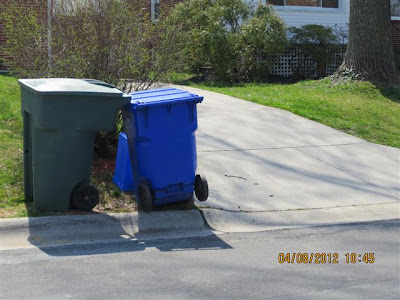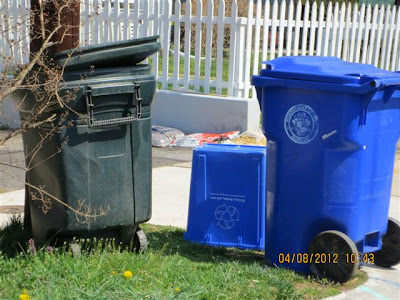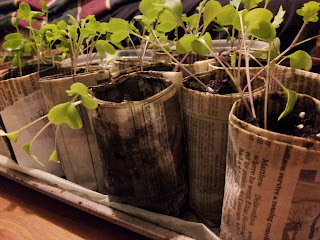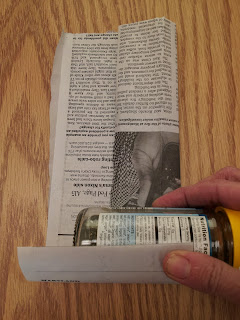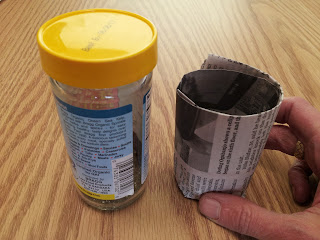A recent post on the “Silver Spring Speaks” blog listed the placement of empty recycle and trash containers as one of the top five challenges to pedestrians. As Solid Waste Services wants to provide great collections and customer service, this complaint concerned me.
To gather perspective on the container placement issue, I made unannounced inspections of several Silver Spring neighborhoods after collection last week. The morning I went out was sunny, with just a bit of wind. However, many collection days have the added obstacles such as heavy rain, winds, or construction.
The Silver Spring Speaks post included this photo to illustrate the collection day “obstacle courses” for pedestrians. The same photo demonstrates some obstacles and challenges for collectors as well:
Challenge #1: Bin replacement location after collection
All trash and recycling containers set out for pick up must be placed within 10 feet of the curb. This helps increase the efficiency of collection. It also helps crews know which items residents want them to take.
What should be a simple task – putting bins and cans back at the curb after they have been emptied – is often not so easy.
Here are two cases in which crews placed containers at the edge of driveways, not in the driveways themselves, or on the main part of the lawn. Collection crews try to avoid blocking streets and sidewalks.
On this street, I found clear sidewalks, with the right-of-way as the "point of collection":
Challenge #2: Morning traffic can be hectic
Drivers don’t like waiting behind collections trucks. This pressure forces the crews to keep moving, and to make quick decisions about where to place containers.
Still, most of the neighborhoods with sidewalks I checked on this day looked like this one:
So... why are there containers in the sidewalks and streets?
Challenge #3: Empty cans or carts are not as stable as full cans
Here are two examples of cans on their sides after crews emptied them. It is tempting to think that the workers were sloppy in replacing the cans. On a closer look, they appear to have fallen over due to a light wind or passing vehicle, rather than having been carelessly thrown onto the sidewalk.
When containers have material inside them, that material helps to weigh them down. Empty containers lack that benefit, and are prone to tipping over.
Challenge #4: Landscaping doesn’t allow for placement of cans
Some sidewalk and landscape configurations make it difficult, if not impossible, for crews to keep containers out of the way. Here, they tried to minimize impact to the sidewalk by replacing containers as close to the retaining wall as they could.
Other times, the street is the only option:
Challenge #5: Help us
I offer this challenge to our residents who don’t want their streets and sidewalks blocked by containers on collection day. What ideas do you have for easing container placement?
Some suggestions:
- Remove the containers shortly after collection.
- Provide a stable point of collection.
This resident modified the front of their property to provide the collectors with a flat and recessed point of collection.
Although this solution will not work for all residents, it demonstrates that there is no simple solution for container placement.
That said, if our collection crews are consistently not returning containers to the point of collection – the place at which you set out your containers -- please call the County’s Customer Service Center at 311. We have staff monitoring the daily activities of collections contractors. Our field staff responds promptly to issues, recording violations as situations dictate.
We in Solid Waste Services are committed to do what we can to keep pedestrians moving safely! Let us know your suggestions for improved recycling and trash collection services.
Jessica Fusillo, Collections Communications
Keeping you in touch with the latest in residential recycling and collections!
jessica.fusillo@montgomerycountymd.gov



